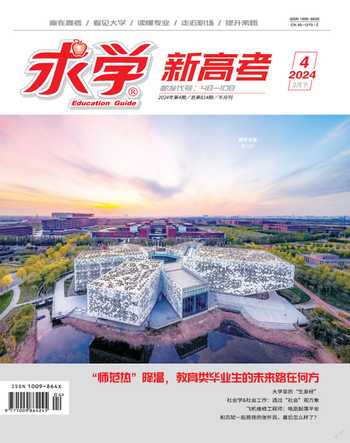你没有意识到对环境有害的三类时尚材料
胡静
The fashion industry has a dark side, a lot darker than many of us realise. Here’s three cold truths you might not have realised damage wildlife and ecosystems.
You may wonder how a cheap woollen sweater affects the Mongolian grassland. Actually, the grasslands were already degraded due to climate change, soil erosion and the drying up of lakes and rivers. Besides, studies suggest that 80 percent of the 70 percent degradation of the grasslands is due to overgrazing. The major factor driving this activity is the global market demand for cheaper cashmere.
We know that the volume of plastic that enters oceans and waterways is already at catastrophic. But less known is that one of the routes is through our washing machines. When clothes made from synthetic fibres are washed in a machine, millions of tiny microfibres are released via water treatment plants into waters. The study of plastic microfibre ingestion by deep-sea organisms show microfibre ingestion in a wide variety of species, including crabs and lobsters… Microfibres have even been found in the food we eat. This situation is bad news for wildlife: the fibres can block the digestion tract and damage stomach lining leading to reduced feeding and starvation.
Dissolving pulp(溶解木浆) is used in many garments by the fashion industry. What you might not know is that the pulp is often taken from trees in endangered or ancient forests. This means that the clothes we buy and wear are contributing directly to deforestation and habitat destruction. Deforestation also has an impact on climate change. These fashion habits are extremely damaging: forest habitats are home to biodiverse populations of thousands of species, with many already rare and endangered.
In recent years, retailers have increased the number of fashion collections they release each season. Every year, 100 billion new garments made from new fibres are produced many of which soon end up in landfill. This results in an enormous carbon footprint and leads to pollution. A dress might cost a few pounds for the consumer, but there is a hidden cost to the wider environment, both for ecosystems and other species.
(材料出自BBC Earth網站,有删改)
1. What is Paragraph 2 mainly about?
A. The negative effects of climate change.
B. The causes of degradation of grasslands.
C. The terrible living conditions of herders and wildlife.
D. The cheaper cashmere produced by Mongolia.
2. How does plastic impact sea creatures?
A. It has little effect on them.
B. It may make them not easy to be starving.
C. It can prevent food from moving in digestive systems.
D. It enters waters by washing clothes.
3. What do the underlined words “a hidden cost” mean in the last paragraph?
A. Additional fees. B. Severe pollution.
C. Rising prices. D. Difficult situations.
4. What will the author talk about in the following paragraph?
A. The reasons for retailers releasing fashion collections.
B. The causes of enormous carbon footprint.
C. What can be done to deal with new garments.
D. What can be done to reduce pollution made by clothes.
1. B。解析:主旨大意题。材料第二段的大意为——你可能会想知道一件廉价的羊毛衫对蒙古草原有什么影响。事实上,由于气候变化、土壤侵蚀和湖泊、河流的干涸,草原已经出現退化。此外,研究表明,70%的草原退化中有80%是由于过度放牧。推动这一活动的主要因素是全球市场对廉价羊绒的需求。选项B的意思为“草原退化的原因”,故选B。
2. C。解析:细节理解题。材料第三段中提到“甚至在我们吃的食物中也发现了微纤维”“这种情况对野生动物来说是件坏事——纤维会阻塞消化系统,破坏胃黏膜,导致进食减少和挨饿”。据此,我们可以看出塑料会阻碍食物在消化系统中移动,故选C。
3. B。解析:词义猜测题。材料最后一段中提到“每年有1000亿件由新纤维制成的新衣服被生产出来,其中许多很快就被送入垃圾填埋场,这导致了巨大的碳足迹,并造成了污染”,结合画线词所在句子的大意“一件衣服对消费者来说可能要花几英镑,但对更广泛的环境来说也有一个隐藏的成本,无论是对生态系统还是其他物种”,我们可以看出“隐藏成本”指的是“环境被严重污染”,故选B。
4. D。解析:推理判断题。通读材料,我们可知其介绍了常见的时尚行业污染环境的冰冷真相。同时,材料最后一段又以“近年来,零售商们增加了每一季发布的时装系列的数量”导入,介绍了这种更新快的时尚对于环境的危害。因此,下一段应该会谈到如何减少时尚行业带来的污染。故选D。

